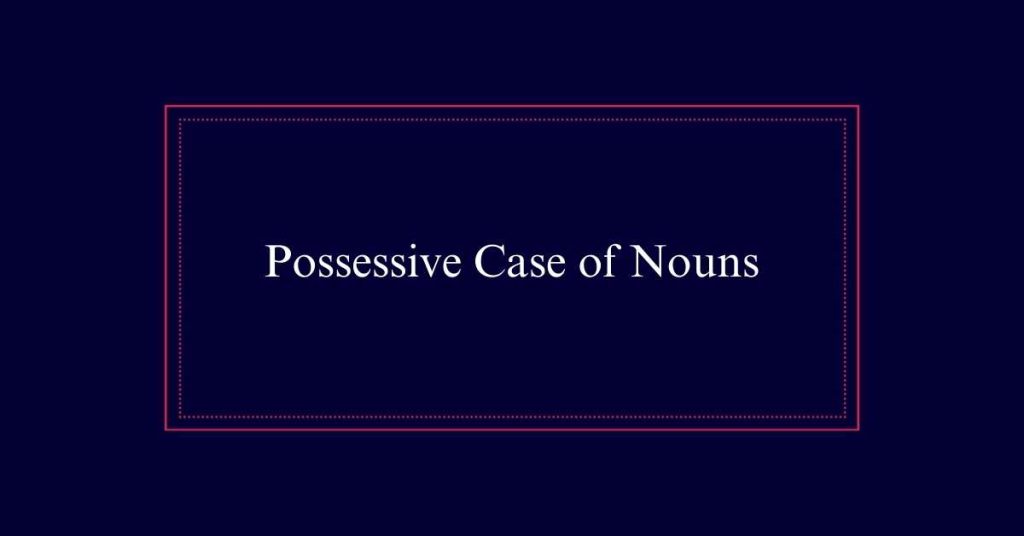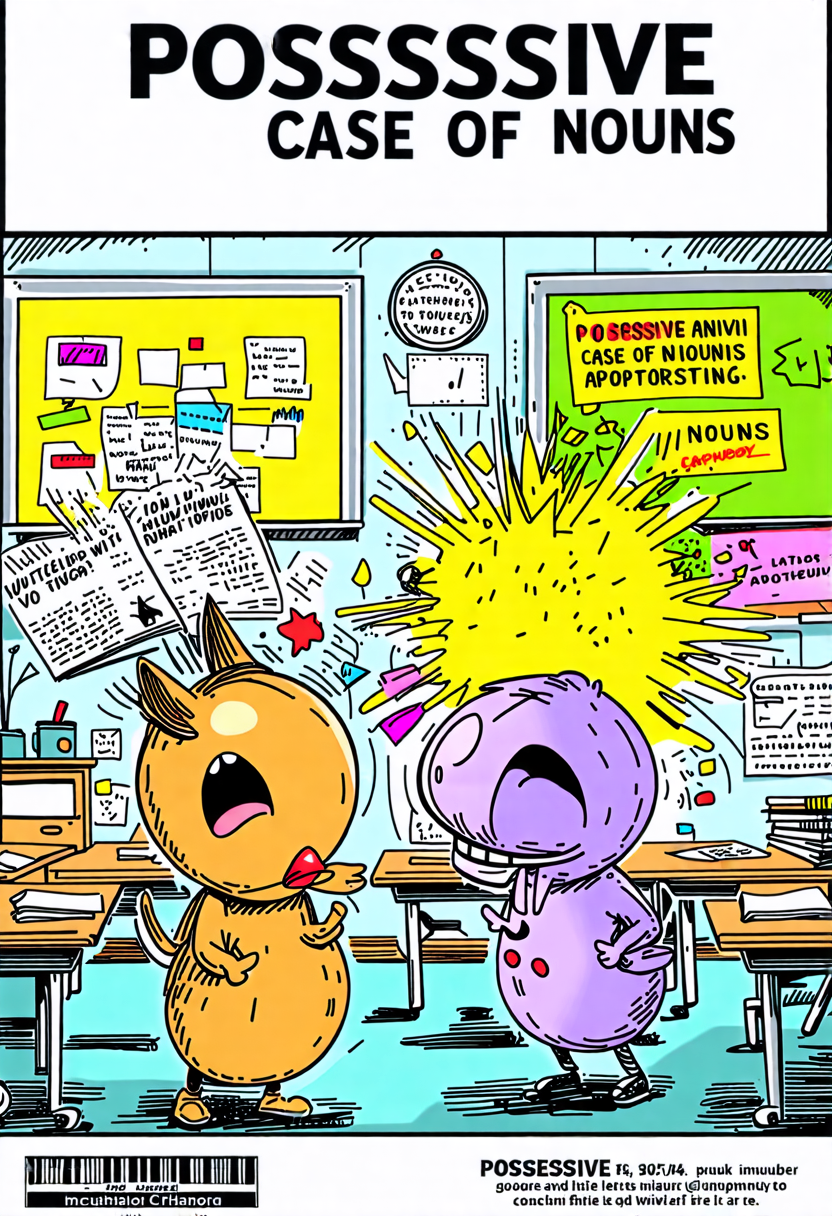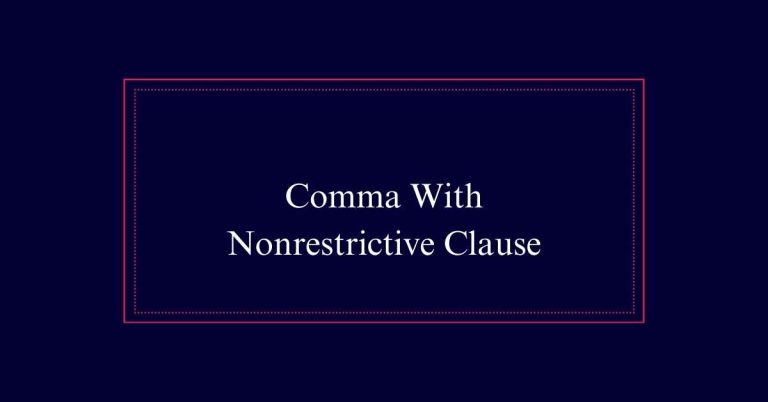Possessive Case of Nouns
Understanding the possessive case of nouns is vital for clear writing. For singular nouns, add an apostrophe + ‘s’ (e.g., ‘dog’s leash’). For singular nouns ending in -s, either add an apostrophe + ‘s’ (e.g., ‘Chris’s book’) or just an apostrophe (e.g., ‘Chris’ book’). Plural nouns ending in -s take an apostrophe (e.g., ‘cats’ toys’), while irregular plural nouns take apostrophe + ‘s’ (e.g., ‘children’s games’).
Singular Nouns Possessive Formation
In forming the possessive case of singular nouns, one typically adds an apostrophe followed by the letter ‘s’. This rule applies to most singular nouns, making ownership clear.
For example, ‘the cat’s toy’ indicates that the toy belongs to the cat. Singular names ending in -s generally follow the same rule, such as ‘James’s book.’ However, some style guides recommend only adding an apostrophe, resulting in ‘James’ book.’
Examples of Singular Possessives
Examples of singular possessives illustrate how ownership is conveyed in writing. A singular noun typically forms its possessive case by adding an apostrophe followed by the letter ‘s’ (‘s).
For instance, ‘the cat’s toy’ indicates that the toy belongs to the cat. Similarly, ‘John’s book’ shows that the book belongs to John. This rule applies to most singular nouns regardless of the ending letter.
For example, ‘the teacher’s desk’ signifies ownership of the desk by the teacher. Another example is ‘the child’s drawing,’ showing that the drawing belongs to the child.
Names Ending in -s
Singular names ending in -s form their possessive case by adding an apostrophe followed by an ‘s’ or just an apostrophe, depending on the chosen style guide. For example, the possessive of ‘James’ can be written as ‘James’s’ or ‘James’.’ Both forms are correct, but consistency in usage is crucial.

When writing, it’s important to choose one style and stick with it throughout your document. This guarantees clarity and uniformity. Examples include ‘Chris’s book’ or ‘Chris’ book.’ Each style guide has its own preference, so be sure to consult the one you are following.
Style Guide Variations
Different style guides offer various rules for forming the possessive case of singular nouns ending in -s, making consistency in application essential. The Associated Press (AP) Stylebook suggests adding only an apostrophe (e.g., James’ book). The Chicago Manual of Style, however, recommends adding an apostrophe and an additional s (e.g., James’s book). Meanwhile, the MLA Handbook aligns with Chicago, preferring the additional s for clarity.
| Style Guide | Singular Noun Ending in -s | Example |
|---|---|---|
| Associated Press | Add apostrophe only | James’ book |
| Chicago Manual of Style | Add apostrophe and s | James’s book |
| MLA Handbook | Add apostrophe and s | James’s book |
Consistency in Style
Maintaining consistency in style is essential for clear and professional writing. Consistent use of possessive forms helps readers understand your text better.
Whether you follow Chicago Manual of Style or AP Style, pick a guide and stick to it. For example, some guides suggest adding just an apostrophe for singular nouns ending in -s (e.g., James’ book), while others recommend adding an -s (e.g., James’s book). Choose a style and apply it uniformly throughout your writing. This consistency avoids confusion and maintains professionalism.
It is particularly important in organizational documents where multiple writers contribute. Establishing a clear style guide makes sure that everyone adheres to the same rules, enhancing readability and coherence.
Plural Nouns Possessive Formation
Consistency in style also extends to the formation of possessives for plural nouns.
For plural nouns ending in -s, the possessive is formed by adding an apostrophe at the end. For example, ‘the boys’ bedroom’ indicates a room belonging to multiple boys. This rule helps differentiate between singular and plural possessive nouns clearly.
On the other hand, plural nouns that do not end in -s form the possessive by adding an apostrophe followed by -s.
For instance, ‘the children’s playground’ shows that the playground belongs to multiple children. These guidelines promote clarity in writing and avoid confusion between singular and plural ownership.
Irregular Plural Possessives
Irregular plural nouns, such as ‘men’ and ‘children,’ form possessives by adding an apostrophe followed by -s. This rule applies to plural nouns that do not end in -s. For example, ‘women’ becomes ‘women’s’ in the possessive form. This guarantees clarity in communication. Consider the following table for illustrative examples:
| Irregular Plural Noun | Possessive Form | Example Sentence |
|---|---|---|
| Men | Men’s | The men’s shoes are on sale. |
| Women | Women’s | The women’s meeting room |
| Children | Children’s | The children’s playground |
| People | People’s | The people’s choice awards |
| Teeth | Teeth’s | The teeth’s enamel is strong |
Multiple Nouns Possession Rules
Understanding how to form the possessive case for multiple nouns is essential for clear communication.
When two or more nouns jointly own something, only the last noun takes the apostrophe and ‘s’. For instance, in ‘Mike and Amanda’s new loft is stylish,’ the possession is shared.
Conversely, if each noun owns something separately, each noun takes the possessive form. For example, ‘Check both Mike’s and Amanda’s schedules.’ This indicates individual ownership.
The possessive case depends on whether the ownership is joint or separate. Properly applying these rules guarantees that the intended meaning is clear and unambiguous.
Singular Vs. Plural Possessives
Having discussed multiple nouns possession rules, it is now important to understand the differences between singular and plural possessives. Singular nouns typically form the possessive case by adding an apostrophe followed by an ‘s’ (e.g., Mary’s pet). For singular names ending in ‘s,’ style guides may vary, but consistency is key.
Plural nouns ending in ‘s’ form the possessive by simply adding an apostrophe (e.g., boys’ bedroom). Irregular plural nouns that do not end in ‘s’ add an apostrophe ‘s’ to form the possessive (e.g., men’s meeting).
Apostrophe placement is vital to distinguish between singular and plural possessives, ensuring clarity in writing. Always be mindful of these rules to maintain precise and professional communication.
Possessives Vs. Appositives
Possessives and appositives serve different functions in indicating relationships between nouns and other elements in a sentence. Possessives show ownership or a close relationship, as in ‘Sarah’s book.’
In contrast, appositives rename or clarify a noun, providing additional information without indicating possession. For example, ‘Sarah, the librarian, will help you’ uses ‘the librarian’ as an appositive to describe Sarah.
Choosing between possessives and appositives depends on the context. Use possessives to denote ownership or association. Use appositives to add extra details or clarification. Understanding these distinctions helps in constructing clear and precise sentences.







